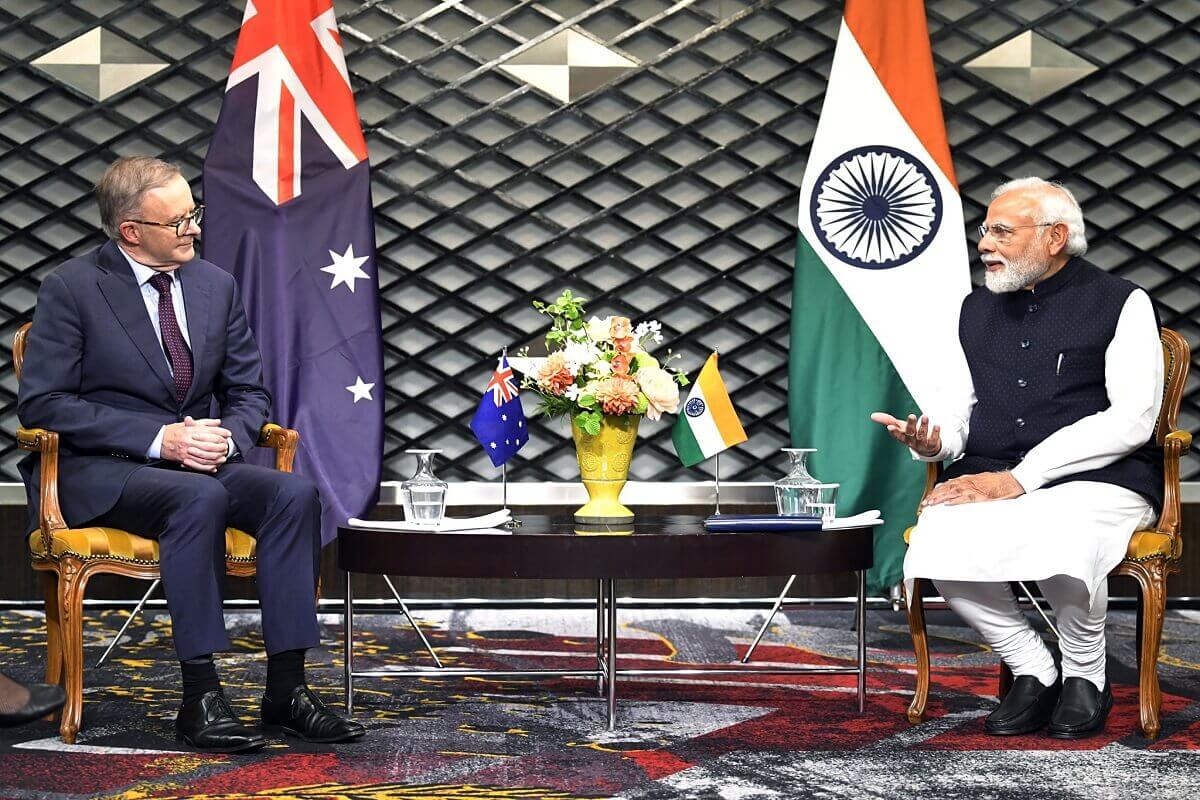In its recently released National Defence Strategy, Australia said that India is its “top-tier security partner.” The 80-page document released on Wednesday stated that Australia will continue to support India’s key role in the Indo-Pacific region by increasing the depth and complexity of the two nations’ defence cooperation.
India a Top Security Partner
The strategy mentioned that, through the Comprehensive Strategic Partnership between Australia and India, Canberra is continuing to prioritise “practical and tangible” cooperation that directly contributes to Indo-Pacific stability. It said that the government will continue to seek opportunities with India to drive practical bilateral and multilateral cooperation.
Additionally, the country will engage with India in areas of defence industry cooperation and information sharing, and focus its defence engagement in the Indian Ocean region by regularising the Australian Defence Force’s presence, including by increasing deployments, training, and exercises with India, along with Sri Lanka, the Maldives, and Bangladesh. It explained that Australia will continue to expand its cooperation with countries in the Indian Ocean region through “regional maritime domain awareness, growing defence industry engagement, and increasing education and training cooperation.”
#UPDATE Australia unveiled its first National Defence Strategy on Wednesday, signalling a new focus on deterring China's "coercive tactics" in a region seen as lurching towards conflict ⬇️ https://t.co/IGQM1xbARK
— AFP News Agency (@AFP) April 17, 2024
China’s Coercive Tactics
The strategy highlighted that Australia expects China to play a more critical role in the region as its strategic and economic weight grows. “China has employed coercive tactics in pursuit of its strategic objectives, including forceful handling of territorial disputes and unsafe intercepts of vessels and aircraft,” it underlined.
The document further stated that there is an increasing risk of a crisis or conflict in the Taiwan Strait as well as at other flashpoints. It emphasised China’s border dispute with India as a point of conflict, along with issues in the South China Sea.
Indo-China, Indo-Pak Tensions
“There remains potential for tension and miscommunication between India and Pakistan and between India and China,” the document noted, underscoring a risk of nuclear weapons use or proliferation — a factor in both of these potential flashpoints.
Citing the conflicts in the South and East China Seas as tension-ridden areas, it warned that there is increasing competition for access and influence across the Indian Ocean, including efforts to secure dominance over sea lanes and strategic ports.
“The threat of terrorism from politically and religiously motivated extremist groups will endure, fuelled in part by ongoing violence and volatility in the Middle East,” it posited.
International Partnerships
The strategy outlined the need to work closely with international partners to maintain regional peace and prosperity and ensure a favourable regional balance. It said that such partnerships are critical to protecting Australia’s economic connection to the world and supporting the global “rules-based order.”
It also mentioned ties with the US as fundamental to Australia’s national security. It added that Australia will deepen its relationships with all countries across the globe, including the UK and Japan. It specifically stated that Australia would invest in its defence relationship with countries like India and Japan, and countries across Southeast Asia, the Pacific, the Indian Ocean, and North Asia.

